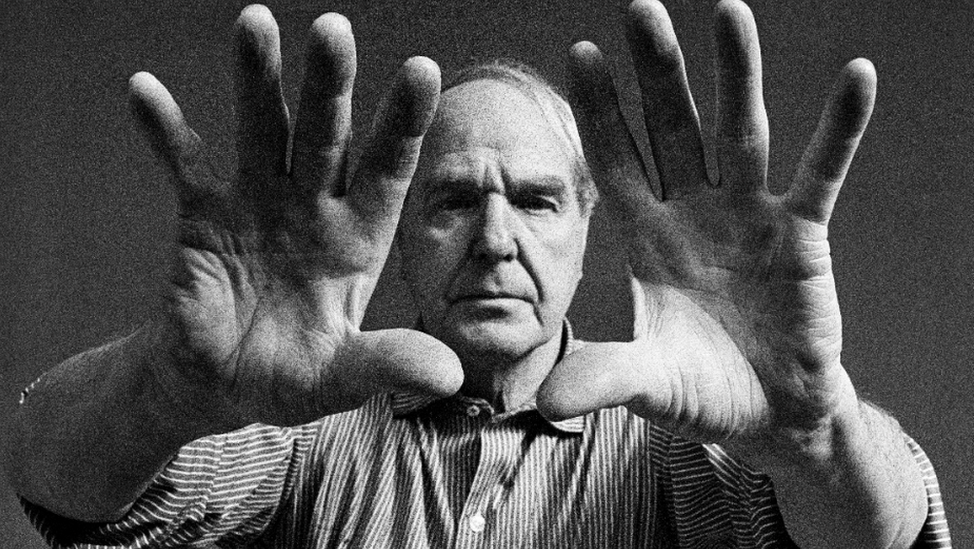Henry Moore's coal mining drawings on show in St Albans
- Published
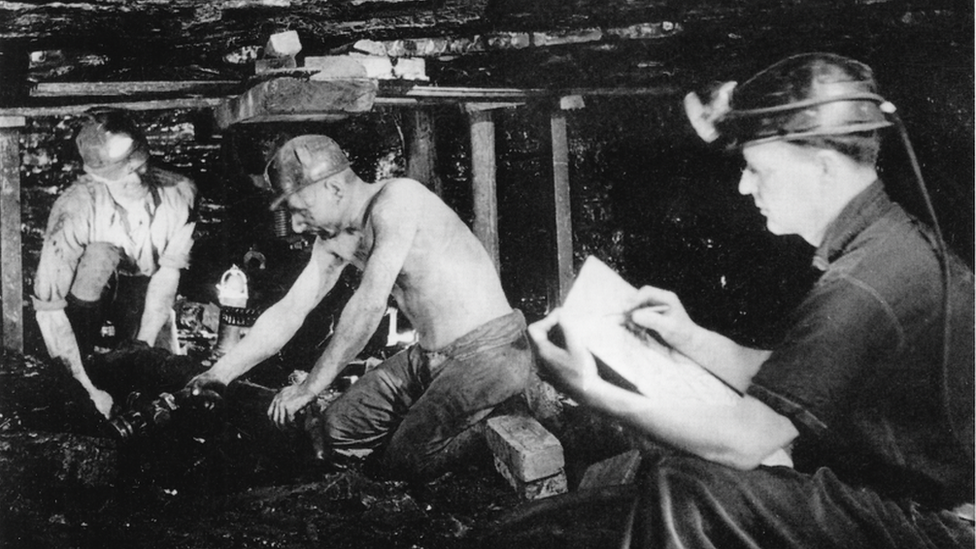
Henry Moore sketching working coal miners at Wheldale Colliery in 1942
A collection of Henry Moore's coal mining drawings from the 1940s has gone on show in an underground gallery.
Drawing in the Dark, at St Albans Museum and Gallery in Hertfordshire, is said to have the largest number of drawings from the series that has ever been exhibited in one place.
Best known as a sculptor, Moore undertook the commission for the War Artists' Advisory Committee (WAAC), external.
Art historian Chris Owen said they had "quite an impact on his later work".
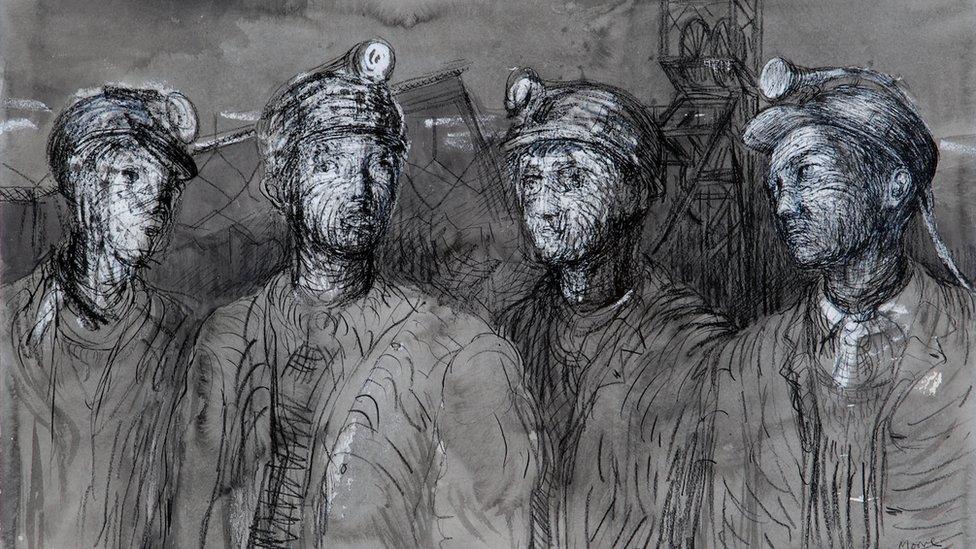
A selection of Moore's 28 finished drawings are on display, including Pit Boys at Pit Head (1942)
Moore spent two weeks drawing from observation in the coal pits with miners at Wheldale Colliery in Castleford, near Leeds.
He then worked from his pit notebooks to create 28 final drawings within six months at his Hertfordshire home and studio in Perry Green, near Much Hadham.
Visitors to the exhibition in the Weston Gallery can see the original sketches, a selection of the finished drawings and some later sculptures and drawings they influenced.
They have been loaned from the Henry Moore Foundation and family, the British Museum and National Coalmining Museum.
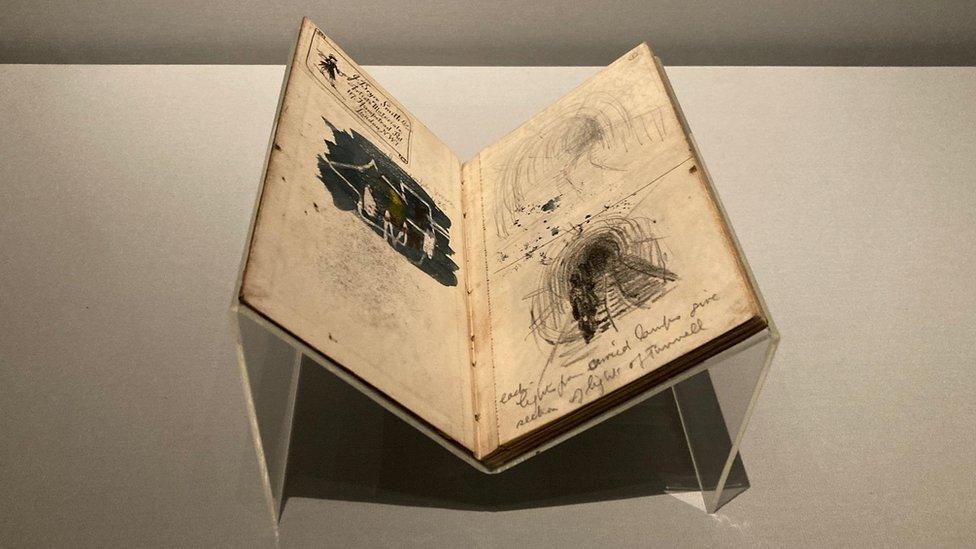
Visitors can see Moore's original pit notebooks in the exhibition
Mr Owen, who has written a book about Moore and the drawings, said the "powerful and haunting" work was originally commissioned during World War Two with a "propaganda purpose" because "the numbers of workers in the mines at the beginning of the war dropped dramatically".
"Many miners had tried to effectively escape from the mines by joining the armed forces or going to work in munitions factories, which were paying much better and were a lot safer," he said.
"So something that valued the miners and promoted their work was useful for propaganda."
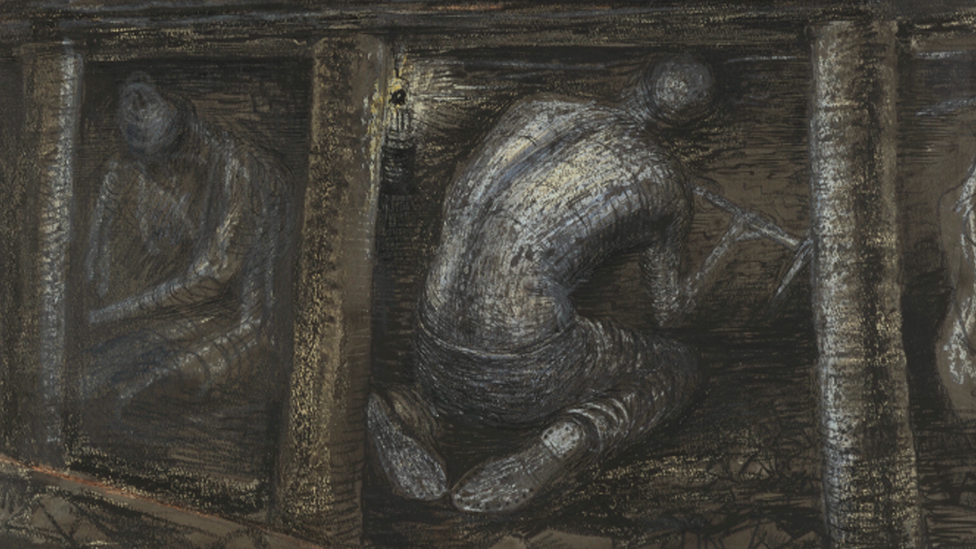
Chris Owen said a lot of war artists' work depicted the Home Front as it was hard to get them embedded with the forces
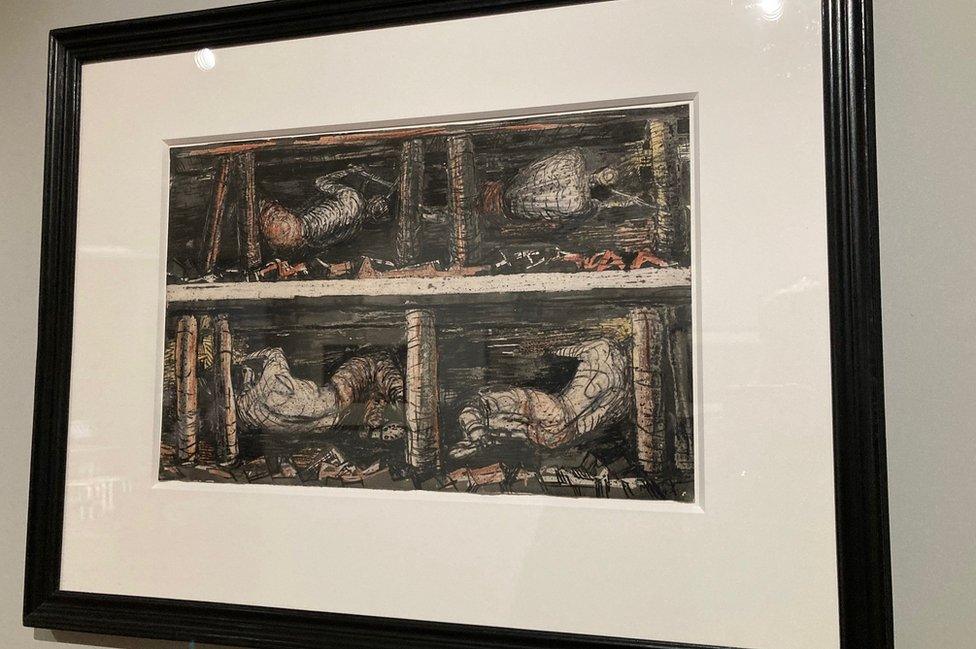
It was hoped drawings such as Four Studies of Miners at the Coalface showed men that mining was a "favourable option"
He added the drawings also "informed [Moore's] later work".
Prior to 1942, he was mostly well-known for his sculptures of women, but all the coal mining drawings are of "labouring men, men in action", Mr Owen said.
"I don't think he'd naturally have chosen to draw men at work, but it was a commission and it interested him because it was in the same coal mine where his father had worked," he said.
"But it actually did make him much more aware of the male body as a sculptural form as well as in a drawing.
"A lot of his sculpture was quite statuesque and suddenly movement came into [them]."
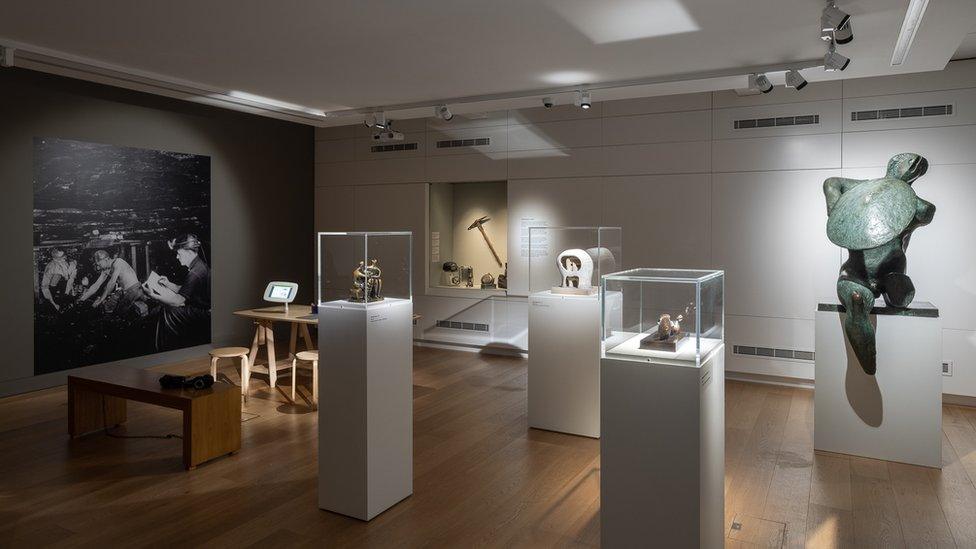
Moore's depictions of "labouring men, men in action" influenced his later work, art historian Chris Owen said
The exhibition will later move to the Danum Gallery in Doncaster, which has more of a geographical connection to coal mining, but the museum said it was important that the sketches started in St Albans, near to where they were created.
Annabel Lucas, the museum's audience development manager, said it had an important role in "contributing to the art history" of the county.
"There's a commitment every three years to do a kind of 'blockbuster show' and Henry Moore is an obvious candidate with his studio and home based in Hertfordshire," she said.
"The pit notebooks were created in the mine, but the drawings from that were created in Much Hadham."
Henry Moore: Drawing in the Dark runs until 16 April.
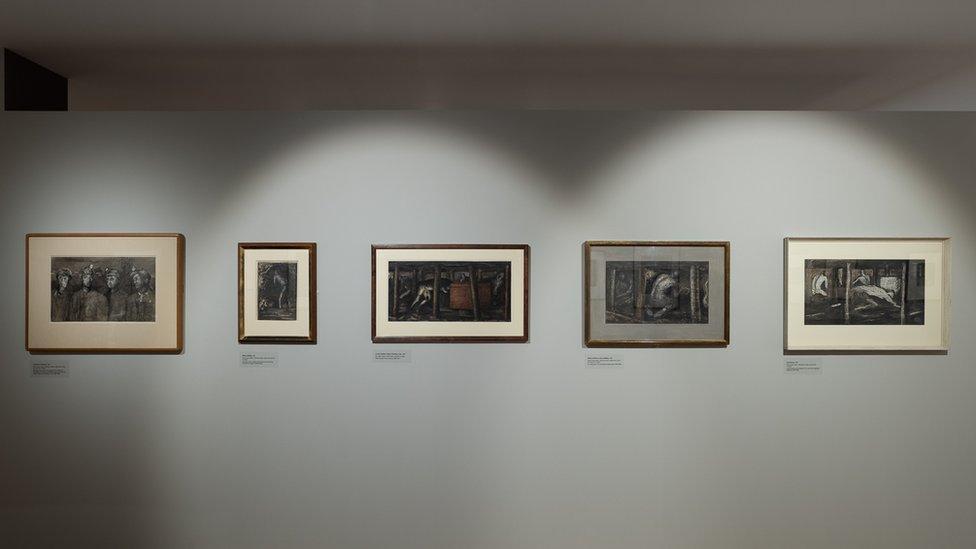
Mr Owen said the display shows "real connections" between now and 1942 with a "war going on [in Ukraine] and an energy crisis"
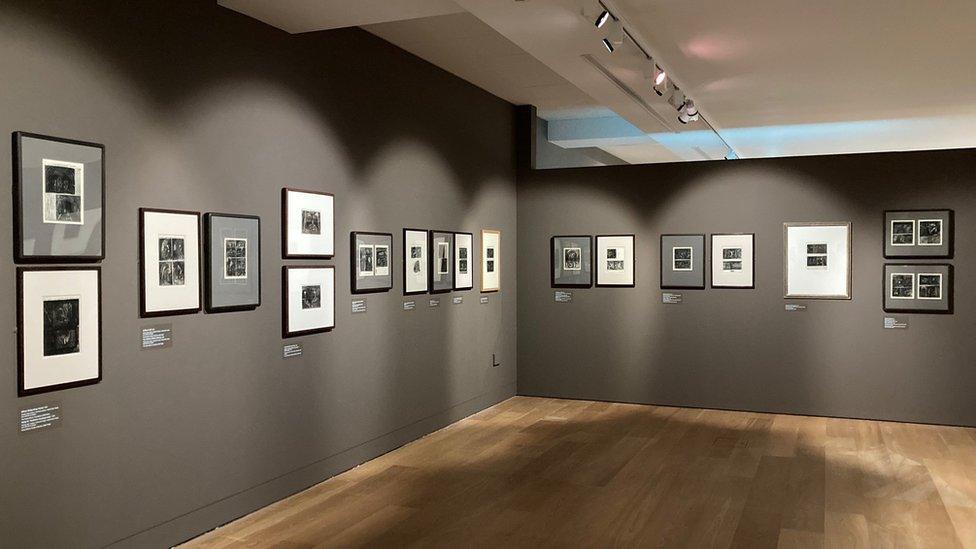
Drawing in the Dark has opened in the basement Weston Gallery at St Albans Museum

Find BBC News: East of England on Facebook, external, Instagram, external and Twitter, external. If you have a story suggestion email eastofenglandnews@bbc.co.uk, external
Related topics
- Published7 December 2022
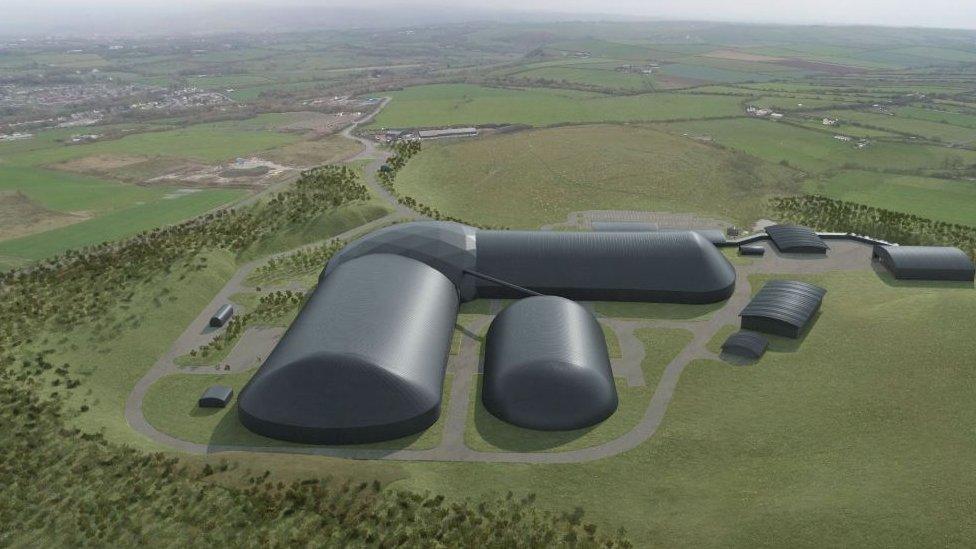
- Published31 March 2022
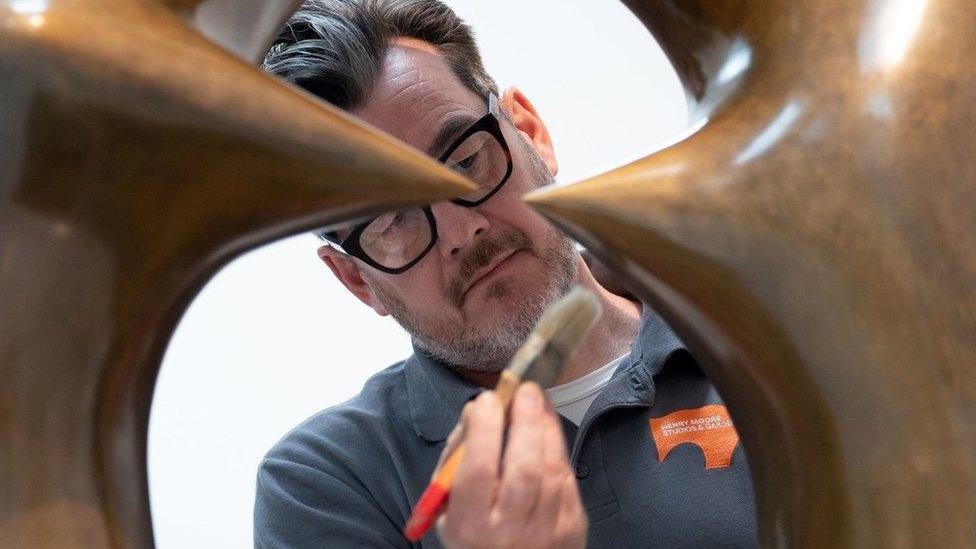
- Published12 May 2021
